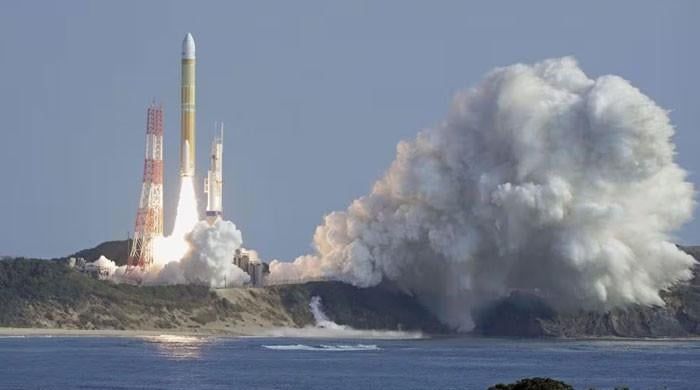Japan seeks to revitalize its program by partnering with its ally, the United States, to counter China.
Japan successfully launched its new flagship H3 rocket on Saturday, getting its satellite program back on track after several setbacks, including the failure of its maiden flight last year.
The launch marks a second consecutive victory for the Japan Aerospace Exploration Agency (Jaxa) after its lunar lander, Smart Lander for Investigating Moon (Slim), achieved a “precise” landing last month. Al Jazeera reported.
Japan, a relatively small player in space by number of launches, is seeking to revitalize its program while partnering with its ally, the United States, to counter China.
The H3 had a “successful liftoff” at 22:00 GMT and was “on course” with its engines working properly, Jaxa said in a live broadcast that showed scientists applauding and hugging each other at the Tanegashima Space Center in the south. from Japan.
All of its payloads (two microsatellites and a dummy satellite) were successfully released, the agency later said. The H3 will replace the two-decade-old H-IIA.
Jaxa and prime contractor Mitsubishi Heavy Industries hope the lower costs and higher payload capacity of the 297-foot H3 rocket will win global launch orders.

The rocket design, which uses simpler structures and automotive-grade electronics, could cost as little as 5 billion yen. In comparison, the H-IIA costs around 10 billion yen per launch.
“This is really good. It took some time for the program to get to this point, but with this launch, they will answer queries from all over the world,” said Ko Ogasawara, a professor at Tokyo University of Science.
The first flight of the H3 in March ended with ground control destroying the rocket 14 minutes after liftoff because its second stage engine failed to ignite. Jaxa listed three possible electrical faults in a review published in October, but was unable to identify the direct cause.
The Japanese government plans to launch 20 satellites and probes using H3 rockets by 2030.
Satellite launch demands have skyrocketed thanks to the rise of affordable commercial vehicles, such as SpaceX's reusable Falcon 9, and several new rockets are being tested this year.











